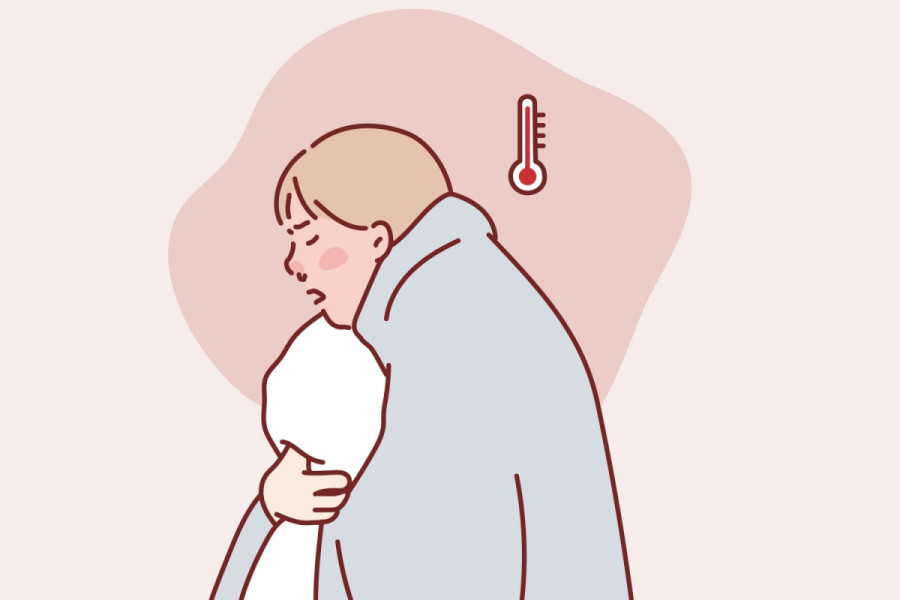Columns
Japanese encephalitis outbreak in Nepal
Its presence in Kathmandu is alarming, and a possible ‘surprise outbreak’ cannot be overlooked.
Dr Sher Bahadur Pun
Nearly two and a half decades ago, I observed a considerable annual number of patients with Japanese encephalitis at the Sukraraj Tropical and Infectious Disease Hospital (STIDH). Many lost their lives due to complications resulting from the delay in hospital admission. The infections were primarily from the Tarai region, where outbreaks commonly occur during the monsoon.
This year, too, there has been a significant resurgence of Japanese encephalitis in Nepal, with 14 patients reportedly succumbing to the illness since the start of the monsoon in June. Fatalities have already doubled the number observed in the last year, and the laboratory-confirmed cases are more than 60. It can be easily assumed that the number of asymptomatic or mildly symptomatic cases could be in the thousands because Nepalis tend to avoid seeking medical attention until the disease presents severe symptoms. Therefore, the chances of determining the actual number of cases and geographical trends are slim.
This scenario raises critical questions: Is Kathmandu at a high risk of the virus? Despite the inclusion of the vaccine in the childhood immunisation programme, are individuals who did not receive the vaccine or those who were jabbed many years ago (no booster dose received) in danger?
Japanese encephalitis is a mosquito-borne "flavivirus" from the same genus as the dengue virus. It is transmitted to humans through the bite of Culex species mosquitoes. According to the World Health Organisation, nearly one hundred thousand symptomatic cases are reported annually in Asia. Its mortality rate can reach up to 30 percent, making it a highly lethal infection. Even after treatment, up to 50 percent of those infected may experience long-term effects on the nervous system. Notably, children under 15 are particularly vulnerable to this virus. In most cases, the symptoms of the infected are either mild or not visible at all. One out of 250 infected individuals may experience severe symptoms, with complex issues in the nervous system.
There is a strong seasonal pattern of Japanese encephalitis in Nepal, beginning in June-July, peaking in August and declining by October. This means that more cases are observed during the monsoon season. Thus, the ongoing outbreak in Nepal is expected to last for several weeks (at least more than four weeks), which means that deaths attributed to this virus could rise unless immediate and effective interventions, such as vaccine and awareness campaigns, are initiated.
Symptoms begin to appear between four and 14 days after infection. These include high fever, headache, stiff neck, confusion/ambiguity, muscle stiffness/cramping, loss of consciousness, and, potentially, death in delayed treatment. No specific antiviral drugs are available for the virus. Treatment is based on the symptoms and complications.
However, a vaccine against it has played a key role in curbing severe Japanese encephalitis that was once widespread. The sudden and unusual reemergence of Japanese encephalitis suggests that a special vaccination campaign should be launched in high-risk areas as early as possible. Unfortunately, we have been focusing only on counting the number of patients and waiting for the end of virus season. Similar conditions have also been observed with dengue virus.
A study (conducted between 2007 and 2015) published in 2017 in the journal PLoS One, revealed that individuals over 25 are equally susceptible to infection and/or even have higher death rates than other age groups. Moreover, the study also showed a notable trend of Japanese encephalitis moving from the Tarai region to Hilly (including Kathmandu) and mountainous regions of Nepal. So, it is necessary to integrate all age groups in the immunisation programmes and extend them to the hilly and mountain regions.
The essential consideration is assessing the likelihood of an outbreak akin to the one in the Tarai region occurring in Kathmandu, given the city’s high population density and limited awareness regarding the virus.
Several studies have shown that a range of infections/vector-borne diseases, previously restricted to the Tarai region, are now reaching the hilly and mountainous regions. Dengue is a prominent example of how vector-borne disease can migrate from the Tarai to the hills. Moreover, a study published in The American Journal of Tropical Medicine and Hygiene in 2007 revealed that 75 percent of infected individuals had no history of travel outside Kathmandu, indicating that the Japanese encephalitis virus might have been circulating or even well-established in Kathmandu long before.
The presence of Japanese encephalitis in Kathmandu is alarming and demands urgent consideration. The possibility of a "surprise outbreak" of this virus cannot be overlooked due to easy access to transportation, climate change, rapid urban growth/increased population density and the environment favouring mosquito breeding. We should not forget that dengue was once considered a disease that only appeared in Tarai, as it maintained its presence there for a prolonged time. Nonetheless, in 2022, 18 years since its identification, Kathmandu experienced an unprecedented and deadly outbreak that resulted in the deaths of at least 88 individuals within a short span.




 20.12°C Kathmandu
20.12°C Kathmandu















